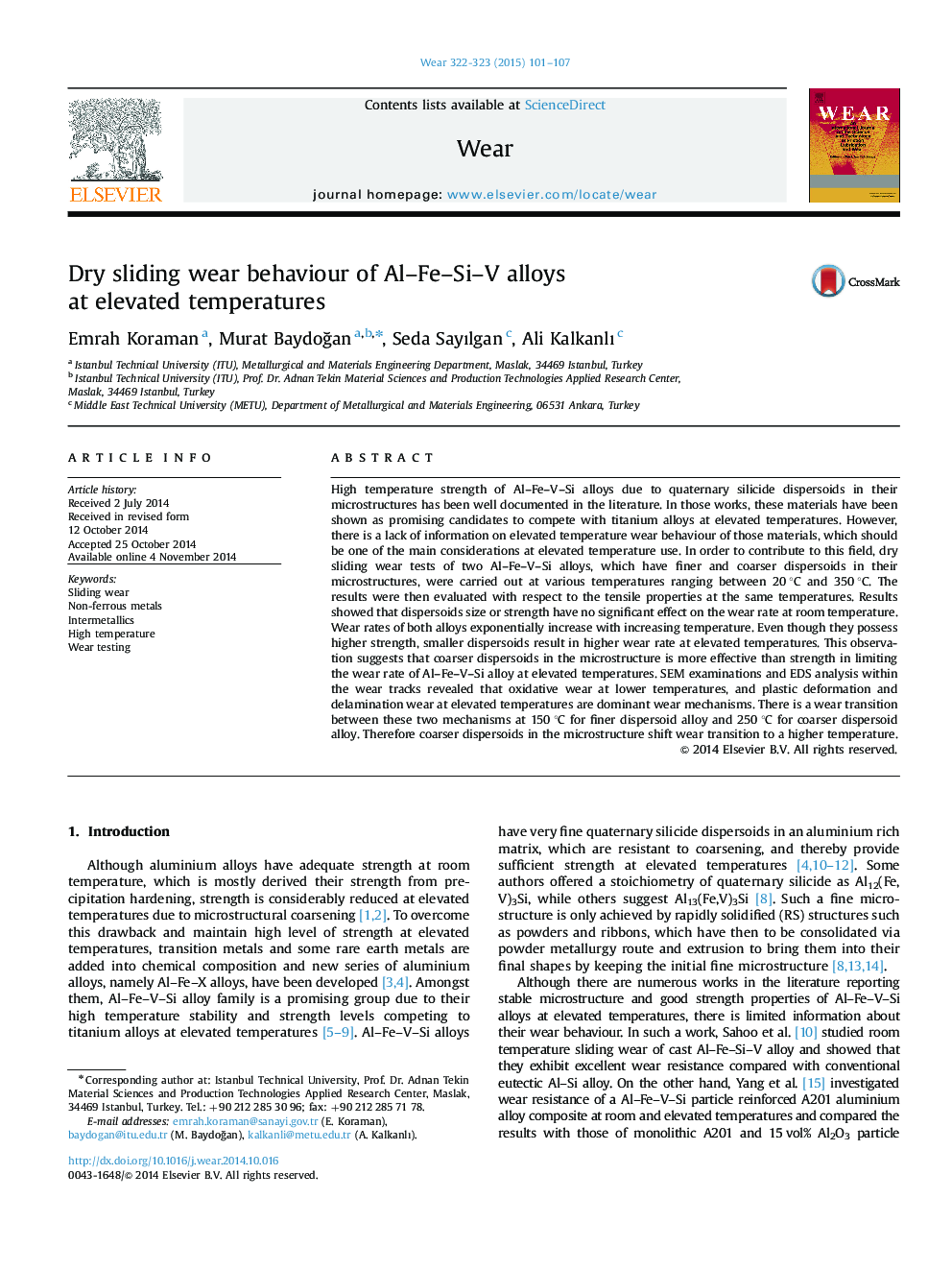| کد مقاله | کد نشریه | سال انتشار | مقاله انگلیسی | نسخه تمام متن |
|---|---|---|---|---|
| 617190 | 1454980 | 2015 | 7 صفحه PDF | دانلود رایگان |

• There is no published work on high temperature wear behaviour of Al–Fe–V–Si alloys.
• Wear of Al–Fe–V–Si alloys is controlled by oxidative wear at lower temperatures.
• Plastic deformation and delamination are dominant at elevated temperatures.
• There is a wear mechanism transition at 150 °C for FPA samples and 250 °C for CPA samples.
• Coarser particles in the microstructure shift wear transition to a higher temperature.
High temperature strength of Al–Fe–V–Si alloys due to quaternary silicide dispersoids in their microstructures has been well documented in the literature. In those works, these materials have been shown as promising candidates to compete with titanium alloys at elevated temperatures. However, there is a lack of information on elevated temperature wear behaviour of those materials, which should be one of the main considerations at elevated temperature use. In order to contribute to this field, dry sliding wear tests of two Al–Fe–V–Si alloys, which have finer and coarser dispersoids in their microstructures, were carried out at various temperatures ranging between 20 °C and 350 °C. The results were then evaluated with respect to the tensile properties at the same temperatures. Results showed that dispersoids size or strength have no significant effect on the wear rate at room temperature. Wear rates of both alloys exponentially increase with increasing temperature. Even though they possess higher strength, smaller dispersoids result in higher wear rate at elevated temperatures. This observation suggests that coarser dispersoids in the microstructure is more effective than strength in limiting the wear rate of Al–Fe–V–Si alloy at elevated temperatures. SEM examinations and EDS analysis within the wear tracks revealed that oxidative wear at lower temperatures, and plastic deformation and delamination wear at elevated temperatures are dominant wear mechanisms. There is a wear transition between these two mechanisms at 150 °C for finer dispersoid alloy and 250 °C for coarser dispersoid alloy. Therefore coarser dispersoids in the microstructure shift wear transition to a higher temperature.
Journal: Wear - Volumes 322–323, 15 January 2015, Pages 101–107